The long-awaited cult-classic Capcom monster hunting game is finally out with a sequel promising to capitalize on the boons of the original and do away with the banes. Numerous gameplay sneak peaks and the free highly-detailed character creator were encouraging heralds that this is indeed true.
Essentially, I expected Dragon’s Dogma 2 to hone in on its complex combat and vocation system when facing down various mythical monsters with unique movesets and strategies. Moreover, I wanted the unique pawn system to be more pronounced and engaging, all while fixing some awkward issues with the narrative and making the open world feel more alive and exciting to explore. So, has Dragon’s Dogma 2 fulfilled these expectations? Surprisingly, mostly yes.
Dragon’s Dogma 2 Review: Combat and the Vocation System
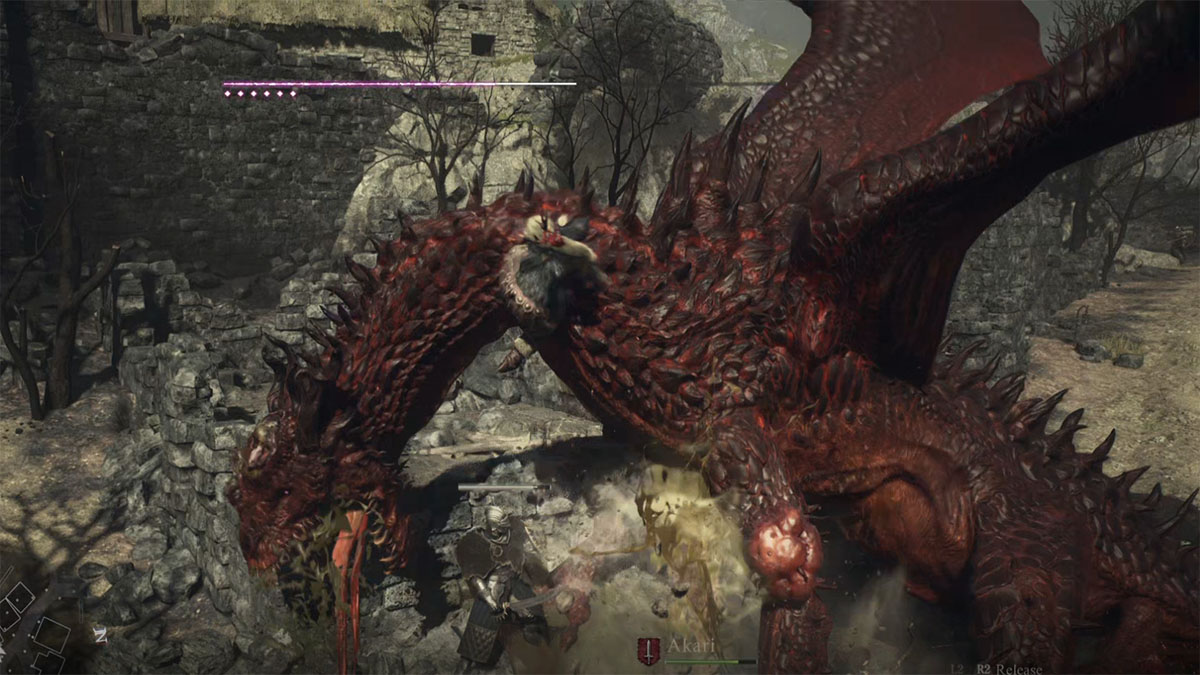
Let’s start with the best part about the game, encountering random epic monsters in the wild. Fighting them feels amazing. This isn’t necessarily something new, as the original did this aspect of gameplay well. That said, the combat in Dragon’s Dogma 2 feels even more polished because there are more vocation abilities, and the monsters have enhanced AI and movesets that actively react to what you’re doing. From the opening Cyclops and Trolls to Griffins, Medusa, and Dragons later on, each enemy feels distinct in their abilities and reactions.
Firstly, the way you encounter them, outside of some main story scripted encounters, will be random and unique for each player. Secondly, it’s not only that you’re fighting these monsters on the ground, but you’re also climbing, riding, and flying them to hit critical spots like heads or wings. Thirdly, no matter how you approach the fight, whether you want to DPS from a distance, use frontal heavy attacks, or climb specific body parts, the monster reacts to your movements. If you’re on a Troll’s back, it’ll jump on his back, slamming you into the ground; if you’re on a Griffin’s beak, it’ll fly up wildly, thrashing its head. Encounters like this make you feel like your approach and decisions in combat matter.
Furthermore, the consumables and the elemental system are quite similar to the original but elevated further. You’re gathering and crafting curatives to keep your health and stamina up in combat while having numerous options to negate harmful conditions like sleep, blight (poisoned), etc. But elemental interactions start getting really exciting in Dragon’s Dogma 2 because there are new conditions, like drenched and tarred, that combo with specific elements.
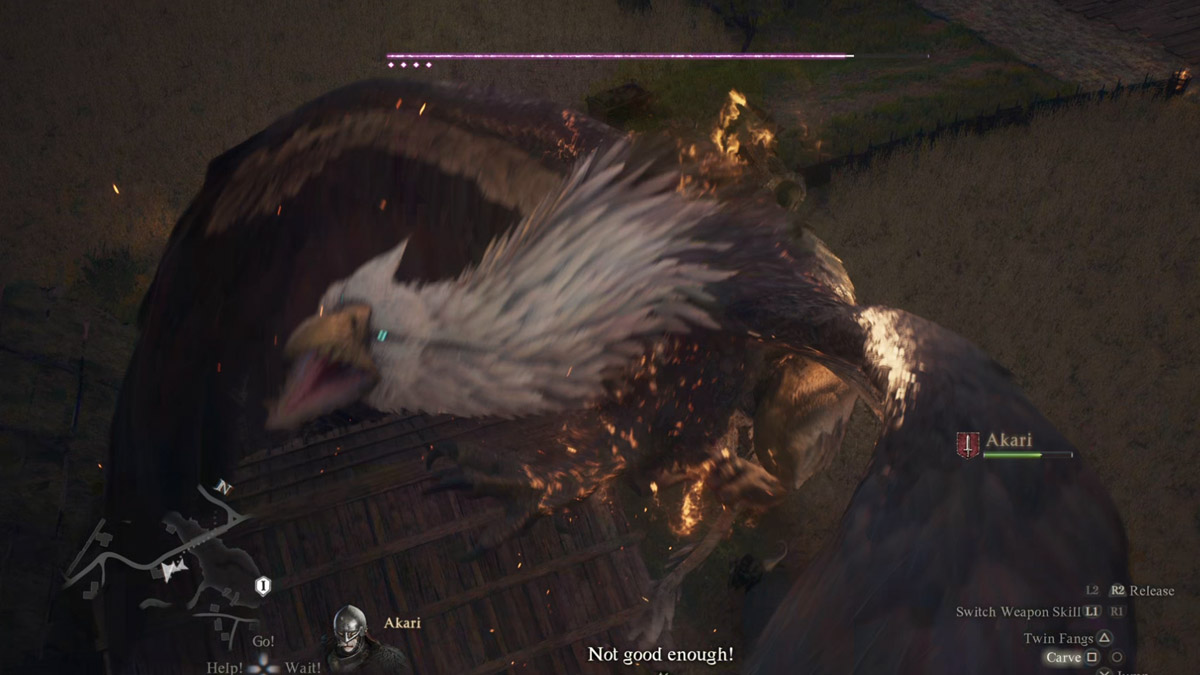
For example, dousing an enemy in water or forcing them into a water area makes them take increase Lightning damage. Shooting a Tarring Arrow at a monster encases them in tar, making Fire damage more effective. It’s something we’ve seen done well in the Divinity: Original Sin series and Baldur’s Gate 3 quite well, but now it’s in a third-person action RPG game. Flying enemies will land if you set fire to their wings, cold-blooded enemies like Saurians will take more frost damage and freeze, and lightning not only does damage but knocks down and stuns foes.
Choosing which negative condition curatives, elemental buffs, skills, and spells, as well as which elemental combo consumables and gear to bring to a fight based on the monster you’re hunting, is an exciting and highly engaging aspect of the game. The flip side is if you’re not prepared, fights can feel bullet-spongy as you’re mashing the attack button for dozens of minutes. You’ll have to think about strategies and approaches to certain enemies. For example, focusing Saurians’ tails lowers their defenses or targeting weak spots on larger monsters deals more damage.
Lastly, for this section, the vocations (classes) feel incredible, with tons of active rather than passive abilities. Yes, there are Augments that provide passive buffs, but every other unlockable Core and Weapon skill does something interactive in combat instead of providing negligible percentage boosts to damage or defense. Do you want to play a Sword and Board character? The game gives you all the standard goodies, but you can also ride your shield in battle and launch allies of your shield to climb monsters. Want to assassinate monsters? Sure, there’s a Thief vocation, but it also has grappling hooks to MK Scorpion-pull foes and land flying monsters on the ground.
Each vocation has several active skills that provide different meaningful movesets you can customize before each hunt. When I was going through a forest area, I knew there would be a lot of grounded foes, so I brought traps and ground dash skills on my Thief. However, when I was going to hunt a flying drake, and there were a lot of Harpy enemies, I brought the grappling hook and air maneuver skills. Moreover, while the Advanced vocations are mostly similar, though improved, the new Hybrid Vocations are really interesting to play with.
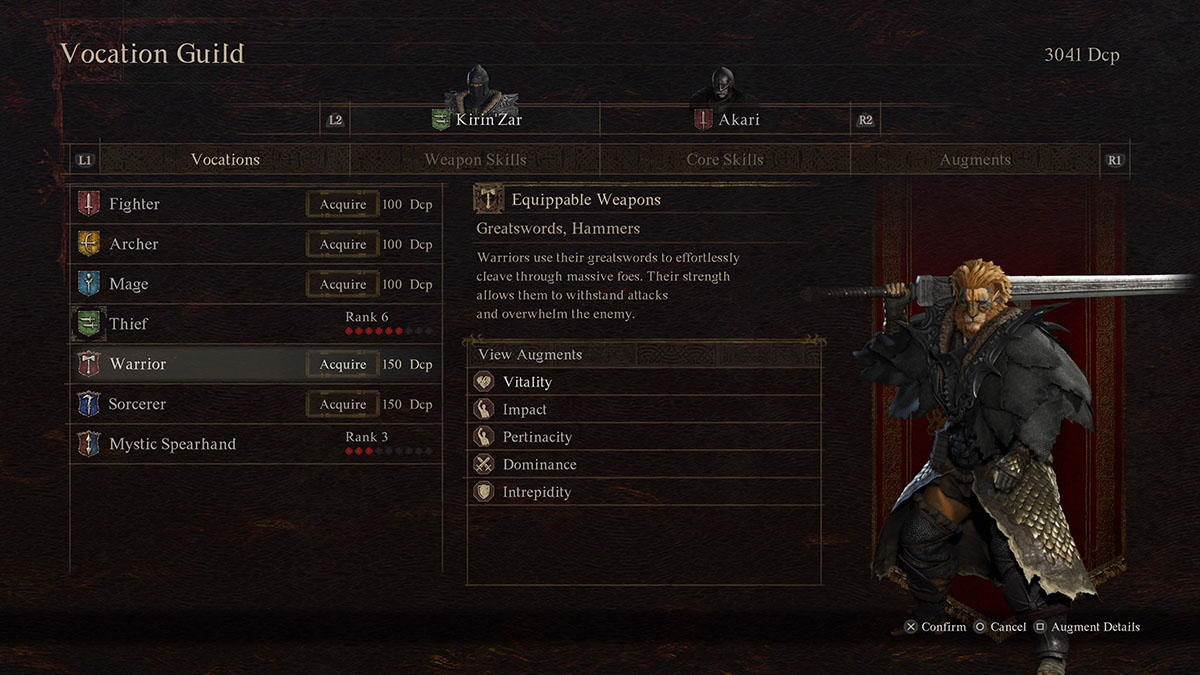
For example, the Trickster vocation brings a whole new style of gameplay where you’re creating illusions to confuse, stun, and aggro enemies. You can also make false cliffs and bait enemies into them to make them fall off the map or astrally project to scout areas. Each Hybrid vocation offers a new approach to combat in this way, though you’ll be familiar with some, like the Magick Archer. Best of all, switching and experimenting with different vocations is highly accessible. You earn new vocations through the Vocation guild quest system. There are also vocation maesters to teach you advanced vocations and high-level skills if you interact with them and their quests.
On the other hand, gear is still a passive element of Dragon’s Dogma 2, which you’ll periodically upgrade to keep up in Strength, Defense, and elemental damage. That said, there’s a new enhancing system with different smithing styles for different enhancements in each region. Overall, it’s a beautiful back-and-forth symphony of monster fighting where your decisions and preparation before and during combat matter, giving you an incredible sense of interaction and agency. Plus, big monsters thrashing and finally going down feels amazing. The only problem I have with combat is that the enemy variety isn’t the greatest as you’ll commonly face reskinned or elementally infused versions of the same monsters throughout the game.
Still, the combat system is so diverse and genuinely fun that it isn’t the greatest problem in the world. I would recommend sticking with the game at the beginning since the initial difficulty spike before you get viable gear can be tedious. However, the combat gets drastically better as you progress through Dragon’s Dogma 2.
Dragon’s Dogma 2: Pawns Get an Update
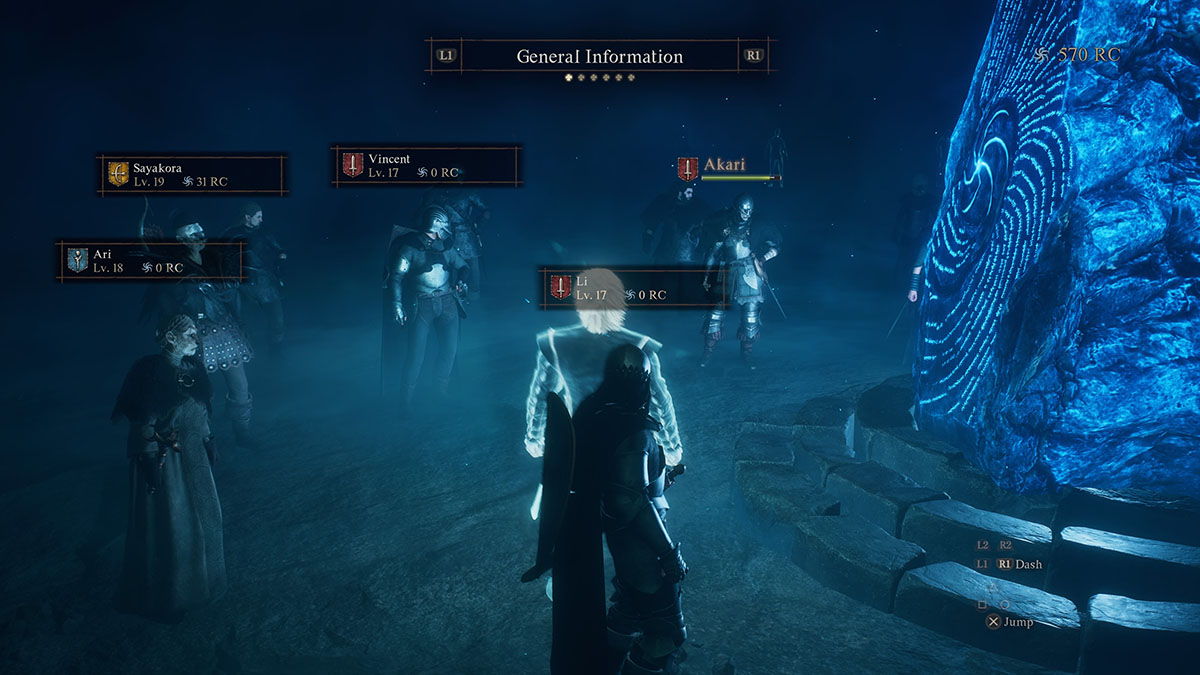
Pawns are back and better than ever. These are your customizable AI companions. For those who haven’t played the prequel, each player gets a main pawn they can customize, and other players can hire to fill out the full four-member party. Besides customizing them visually, you can also change their vocation, skills, and augments to create the perfect companion in combat. You can even hire celebrity pawns from famous internet personalities.
Furthermore, you can set your main pawn’s Inclination to customize their behavior during exploration and combat, which we saw in the original. However, a new addition is the Pawn Specialization system, allowing your pawns to learn a profession that further alters their play style. I made my pawn a Chirurgeon, which had them use supportive curatives, like health and stamina potions, on the entire party, not just themselves.
The customizable vocation and inclination system gives you full freedom to create the pawn you want. While they can still fall off cliffs accidentally, their combat AI is much better, and with the right build, they can be incredibly valuable. Mage pawns are still OP in the early game due to healing and AOE spells. One element I cannot talk too much about without going into spoilers is the pawn Dragonsplague disease. Essentially, this is a narrative pawn rebellion system that affects pawn behaviors and makes them more dynamic — better yet dramatic.
Dragon’s Dogma 2: The World Feels More Alive
The world of Dragon’s Dogma 2 feels more alive. There are hidden nooks and crannies you can reach to discover points of interest with enemies and loot. You can also come across random small dungeon instances to explore. Overall, the open world has more content in it, and the game doesn’t feel as unfinished as the original. Monsters will set traps and ambush you. Random Griffins, Drakes, and Harpy packs will roam the world attacking you if provoked. There’s even a day and night cycle that affects certain consumables, quests, and enemy behaviors. As for fast travel, you can use the new ox carts to quickly traverse the main roads or set teleportation crystals like in the original. While this fixes issues with tedious journeys in DD1, there can still be a lot of walking, but at least you’re exploring points of interest, gathering supplies, and fighting monsters for better loot while doing it.
One of the best elements of exploration, though, is that pawns can guide you and show you secrets their players have discovered. This is applicable in the wild but also in cities for main and side quests. I really like the fact that if you’re stuck on a quest, hiring the right pawn can show you the way. That said, while it’s exciting to interact with other players’ pawns, I have two slight issues with this system.
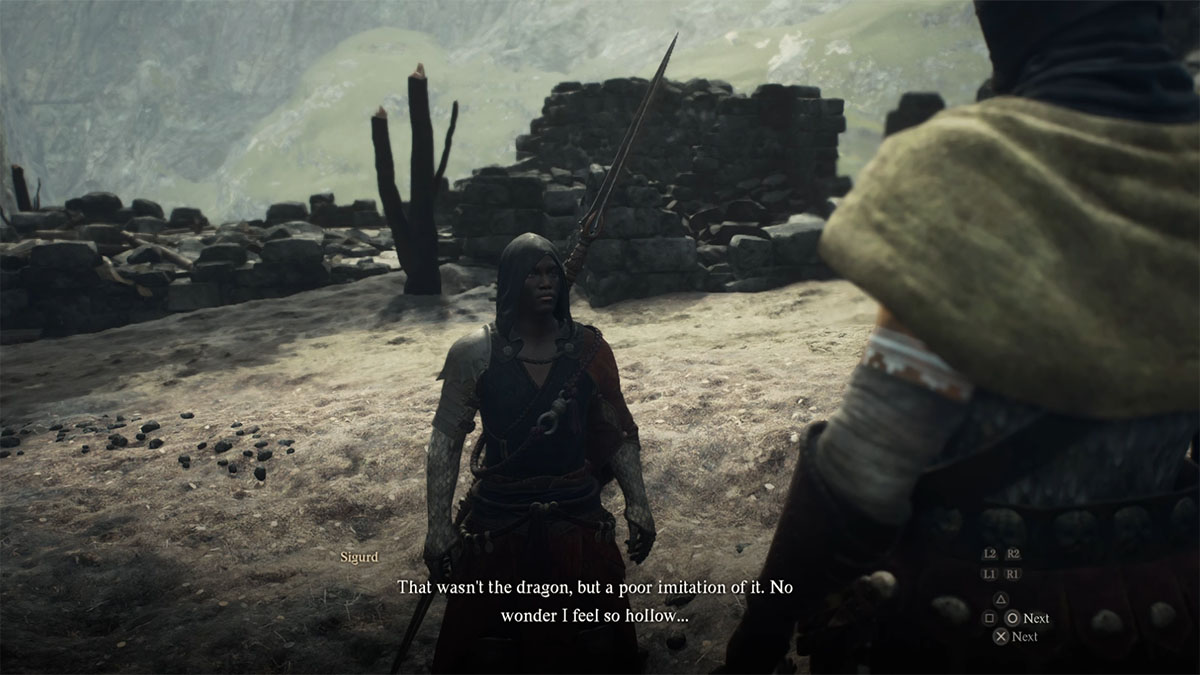
The first one is if you don’t want to interact with pawns for whatever reason, you can be stuck on quests for a while. Secondly, once the community has engaged with the game for about six months or more, players will discover every secret. This means that new players hiring pawns from experienced players now have a ticket to every secret, which slightly diminishes the joy of discovering that secret yourself. I worry that the really exciting dialogue moment where your hired side pawn goes something like, “Oh, my master never found this secret you found. I’ll show it to them,” will be lost for new players. This remains to be seen, though, and it’s generally a small nitpick.
Dragon’s Dogma 2 Review: Story, Dialogue, Acting, and Music
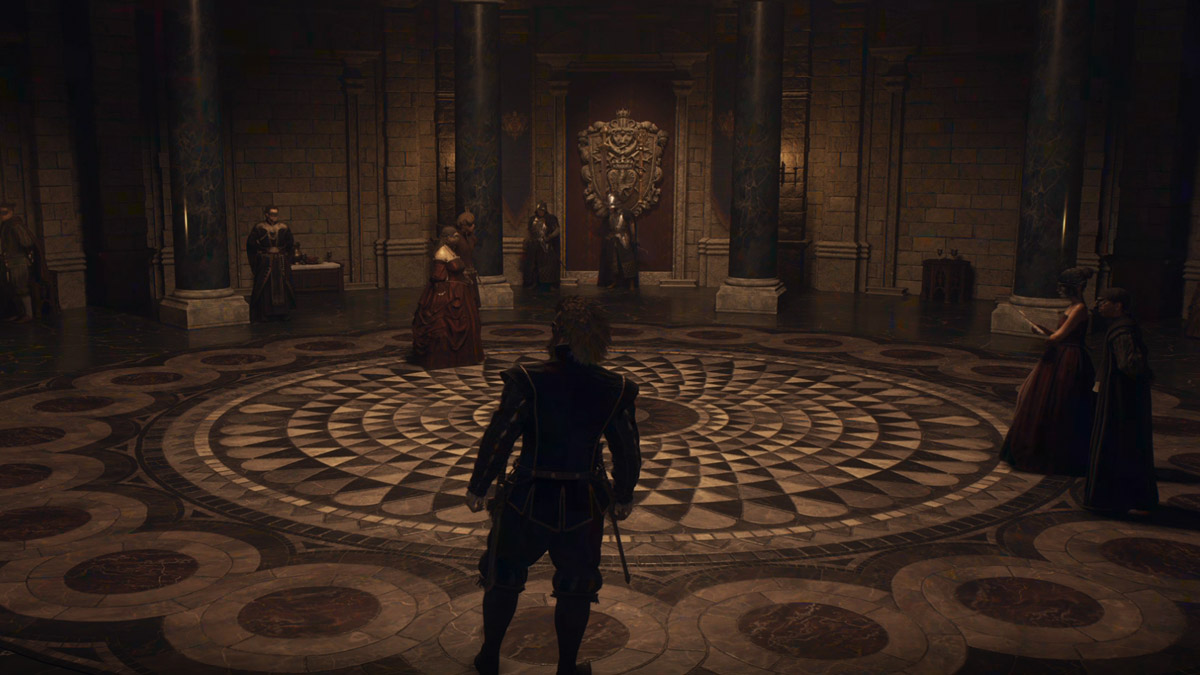
This is where Dragon’s Dogma 2 slightly loses its charm for me. I have some issues with the story and the general early to mid-game narrative, similar to the original one. However, I must preface that it’s much better than Dark Arisen. The problems mostly arise from a linear story that’s not backed up by mechanical elements. The game wants you running around the city doing errands and engaging in courtly intrigue, trying to stealthily and shrewdly outmaneuver political figures.
This sounds like a superb plot, but, in reality, you’re doing fetch quests and “infiltrating” courts while wearing full war gear without a stealth system, and the guards just ignore you. There’s a prison break quest where you have to get an NPC out, only for you to raise the alarm and the NPC saying something along the lines of “Nah man, I’d rather stay here for now. Leave the door open, though, I might change my mind.” And then you’re doing another series of fetch quests to convince that NPC to leave the prison while their cell is open, and you can walk in and out of the prison area willy-nilly when you please. The sense of drama and narrative tension is lost in most early to mid-game main missions since the game doesn’t have a proper stealth and intrigue system to support its story.
The main story characters aren’t the most engaging, and you’re thrust into the Arisen plot without much agency. In my mind, I had a more developed relationship with my Fighter pawn because of the random responses to my actions than I did with important story NPCs. Though I must say the voice acting is elevated from the original. You can really notice the drastically higher budget and development time in these visual and audio-based elements like graphics, voice acting, and sound effect design. Satoshi Hori, the composer of Monster Hunter Rise, among other things, crushed it with the soundtrack for Dragon’s Dogma 2, even though you can still hear some of fan-favorite Tadayoshi Makino’s pieces from the original.
Early mediocre narrative aside, the story does pick up once you leave Vernworth and enter Batthal and beyond. This is simply due to the fact that you’re facing more epic plot points and challenges, not necessarily due to the quality of the writing. The Dragonsplague is quite interesting, as well as the sequel’s way of representing the Dragon. Besides these two grand elements and other late-game plot points, one smaller narrative element I liked is the introduction of Beastren as a playable race, even though they could have just as well introduced Elves. While Beastren don’t provide any mechanical benefits, there are some scenarios where your choice of race will affect story interactions.
Overall, while the story isn’t the best part about Dragon’s Dogma 2, the campaign does improve as the game progresses. It’s indeed better than the original for the sole reason they had more time to finish the game and flesh out details. After all, Dark Arisen had a lot of content cut due to time restraints and pressure. There are even multiple endings to explore and unlock, so be on the lookout as you reach the late game.
Dragon’s Dogma 2 Review: The Bottom Line
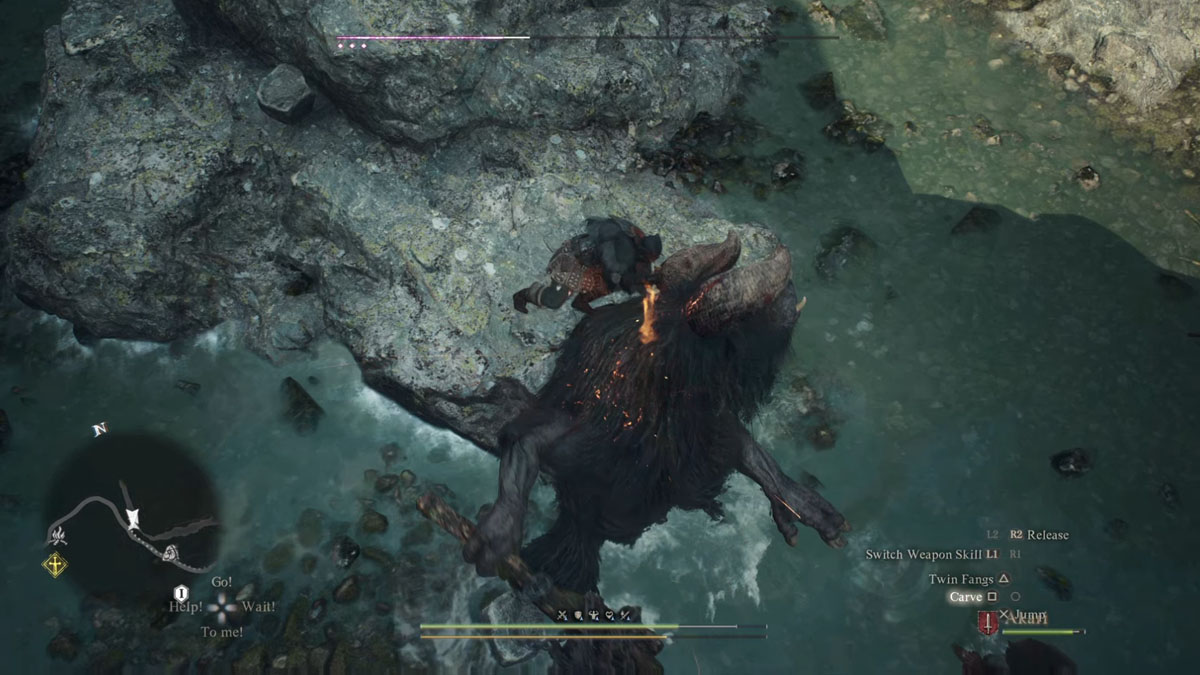
Pros
- A highly in-depth and satisfying combat system that encourages experimentation, preparation, and approaching encounters creatively.
- An exceptional array of vocation abilities makes each class unique and diverse in their approaches to combat (Shout out to the Trickster vocation, which feels like a breath of fresh RPG class air).
- The pawn system is better than ever, with highly customizable gear, vocation abilities, inclinations, and specializations for our favorite sidekicks.
- Unlocking and changing vocations is incredibly simple and encouraged, prompting experimentation and fun build combinations.
- Some of the best boss fights in modern RPGs, encouraging elemental combos and approaching the fight methodically by targeting weak spots or interacting with the environment.
- The soundtrack, sound design, and new-gen graphics make for an immersive experience while exploring and fighting monsters.
Cons
- While the story is better than the original, it’s not the most engaging part. Combat and exploration outshine it greatly.
- The game has some tedious parts like lacking enemy variety and having to go on fetch quests backtracking across the same areas.
- You can only have one savefile and cannot reload previous saves or make new characters.
- If not properly geared or prepared, enemies can sometimes feel bullet-spongy, leaving you mashing the attack button.
Overall, Dragon’s Dogma 2 is a far superior and more polished game than the original. It does what Capcom promised. Elements liked were enhanced, and elements that bothered the community were tweaked and improved. Let’s be honest: The story isn’t the best part of the Dragon’s Dogma series, but the sequel’s narrative is at least more engaging than Dark Arisen.
What will draw in players the most is the gritty combat and vocation system. You’ll figure out elemental combinations, monster weaknesses and weak spots, secrets in the open world, and more. There’s no greater joy than learning how to take down your first flying monster since the game doesn’t hold your hand, and it’s quite rewarding learning how to do so yourself or with the help of a pawn. Veterans of the original will feel right at home, but there are still new skills and mechanics to discover. If you haven’t played the original, the game is highly accessible. If you have, Dragon’s Dogma 2 is everything we wanted the original to be.







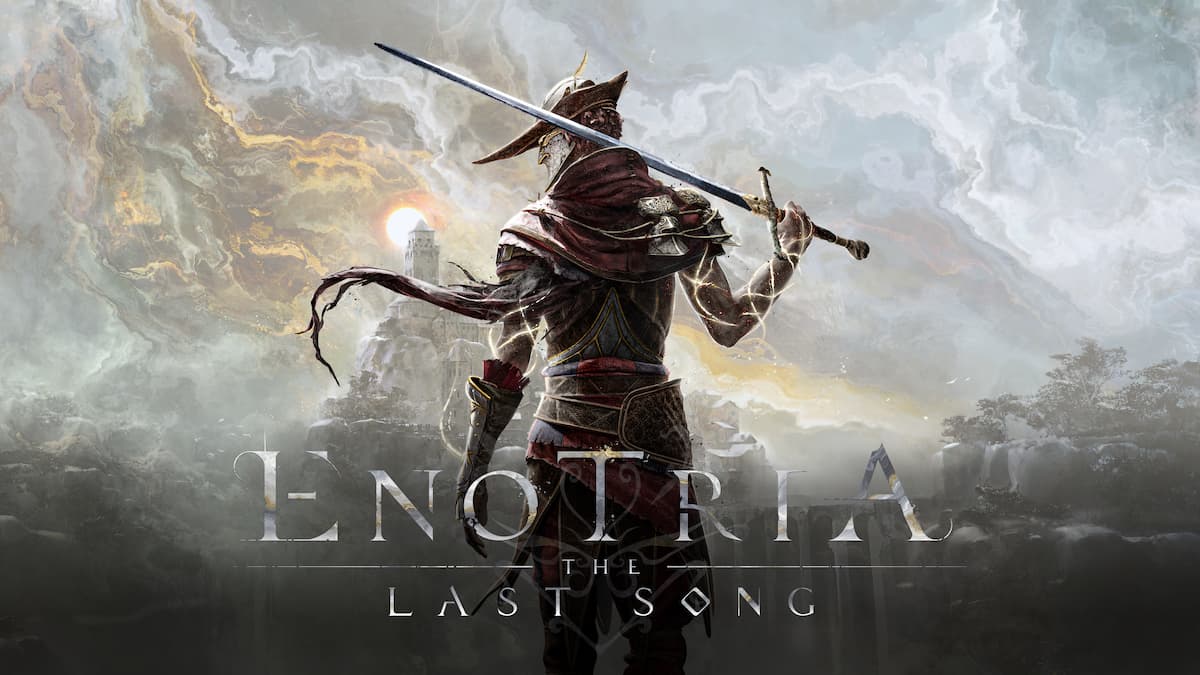
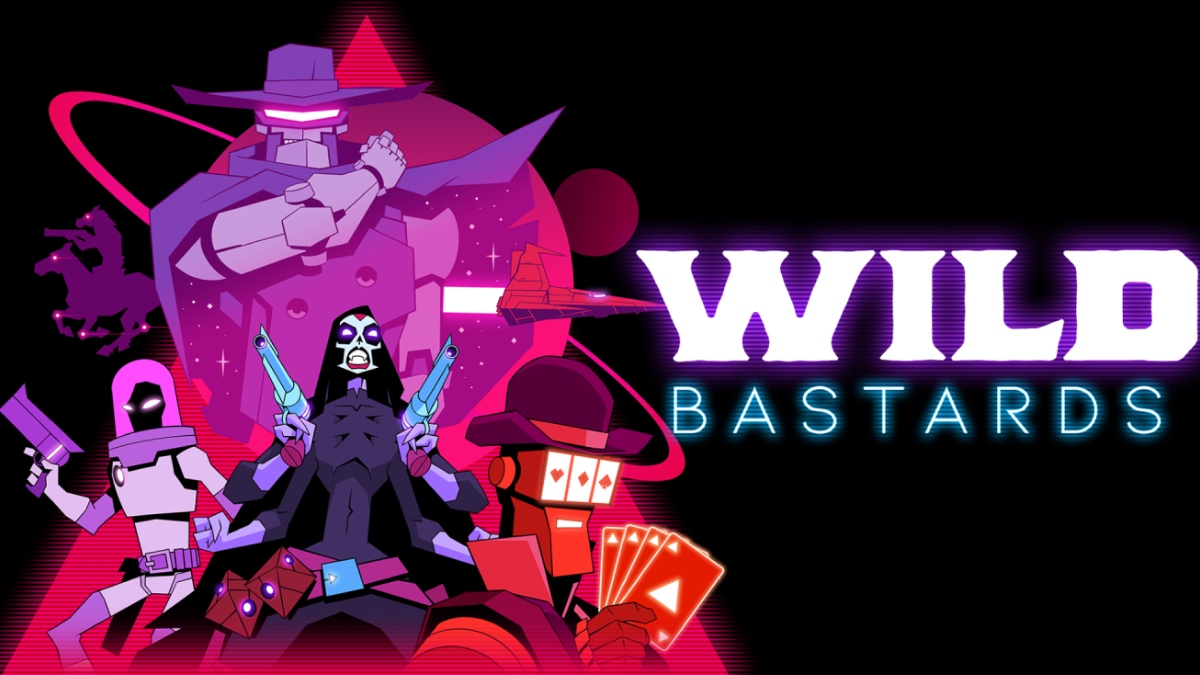

Published: Mar 20, 2024 11:00 am